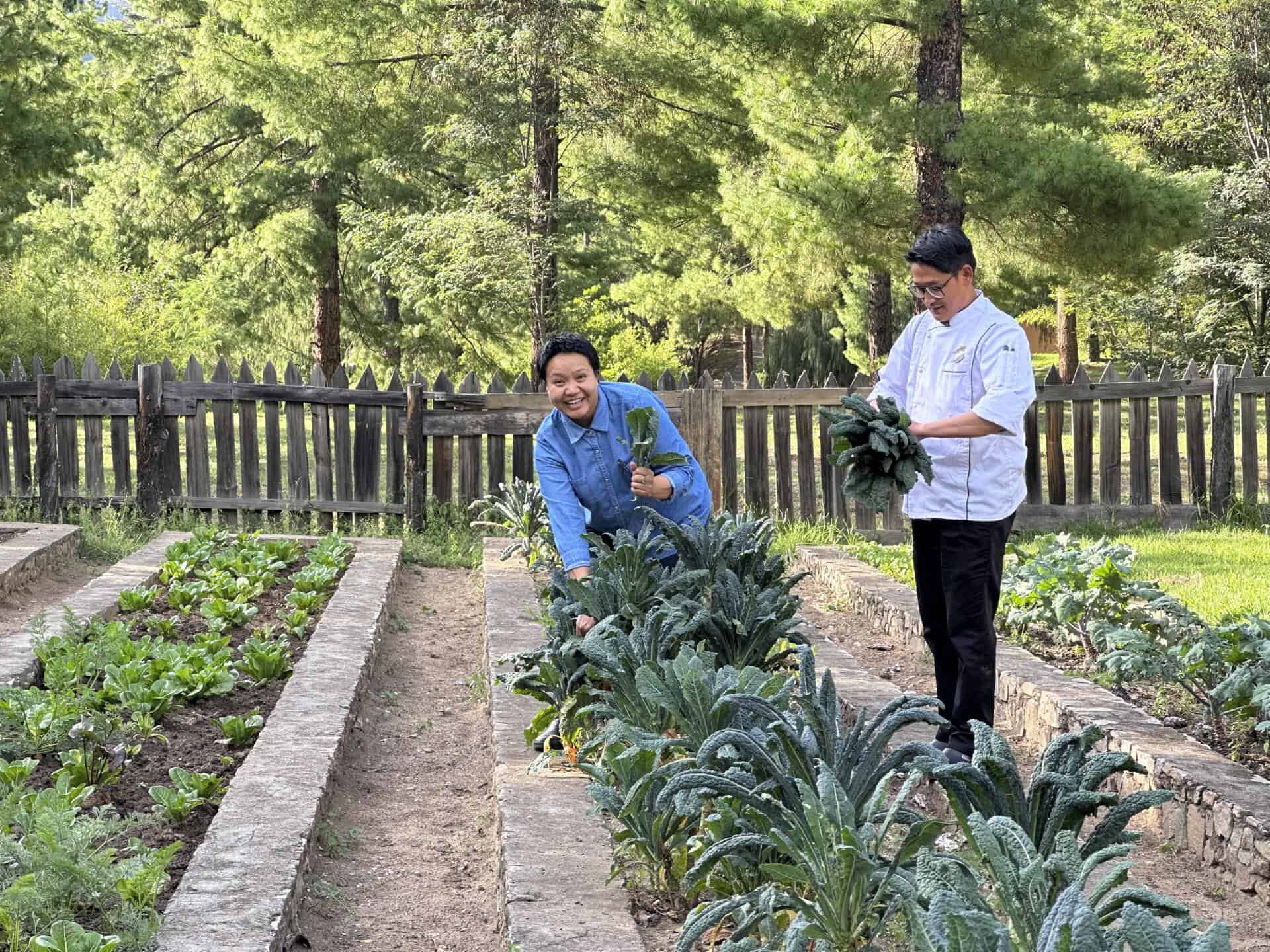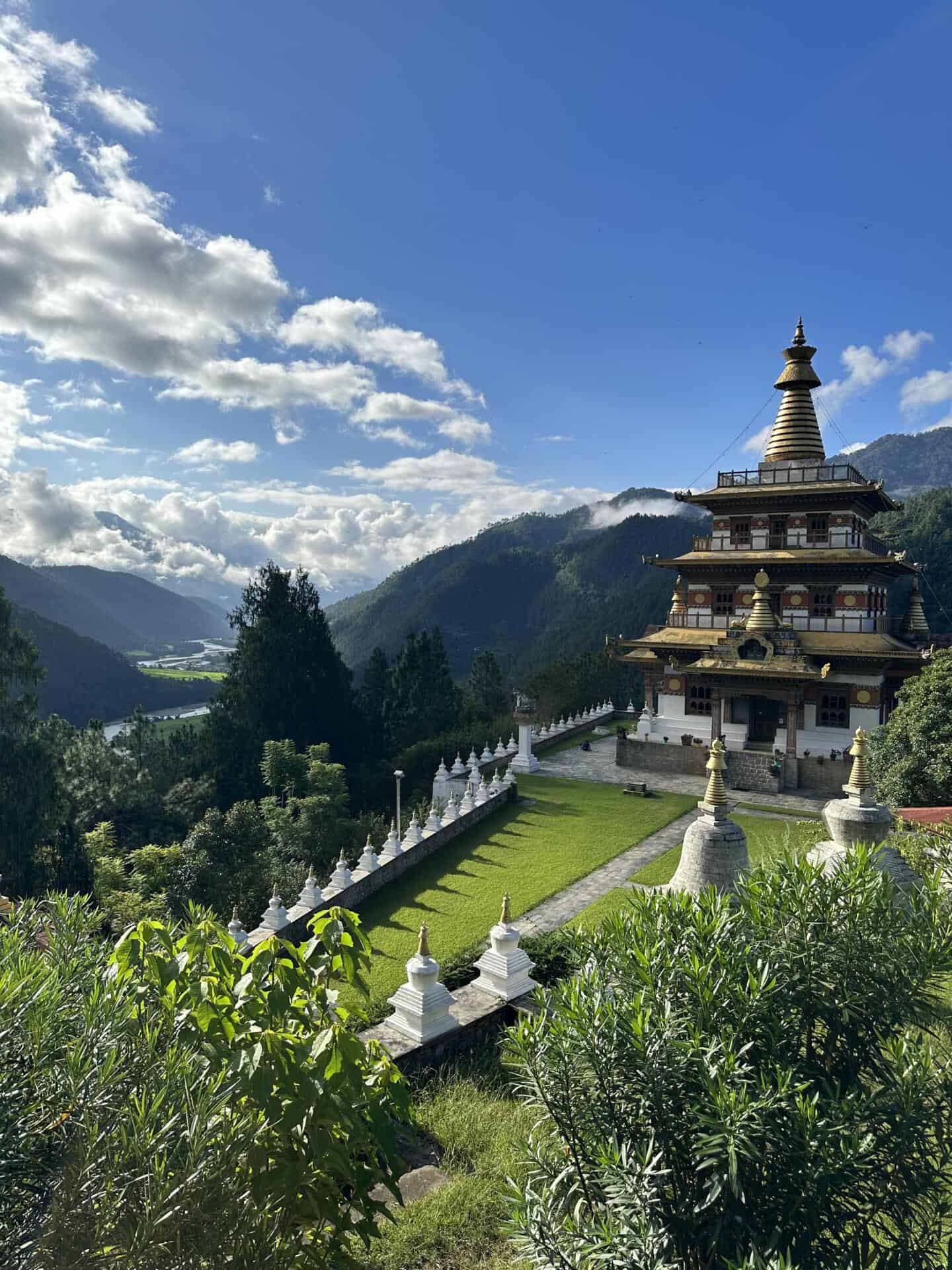The carbon-negative Buddhist country is on the cusp of a tourism renaissance.
Bhutan walks the tightrope between tourism and sustainability

I am crawling on all fours on a bund between the emerald paddy fields in Punakha Valley, Bhutan. Ahead is the fabled Mo Chu river. All around, perched on hillsides are Buddhist nunneries and monasteries, their prayer flags bringing to mind a Matisse print. This is Bhutan: carbon-negative, Buddhist and a pioneer in sustainable tourism.
What I am after is neither Zen nor spiritual but a hoopoe, a stunning bird that is linked to wisdom in Farid ud-Din Attar’s wonderful poem, “The Conference of the Birds.” Birders come from all over the world to Bhutan for its extravagance of wildlife. This tiny country, about the size of Switzerland contains 774 species. In comparison, neighbouring India— nearly ten times the size— has just 1200 species.
As a birder, I too came into Bhutan with a “target list” of the species I wanted to see. Bhutan softened me though– changed my approach. Perhaps it was the beauty of the landscape, or the warmth of the people– that nudged me to staying present instead of chasing targets.
Punakha Valley is the new ‘it’ spot in Bhutan these days, thanks to the just-opened Punakha River Lodge from luxury safari operator andBeyond, the latest to join the Amankora, Como and Six Senses in this picturesque region– a favourite of international celebrities including Christian Louboutin and Diane Von Furstenberg. Now, there are those in the birding world who would turn up their noses at celebrity name-dropping, but I am not one of them. As someone who loves luxury spas as much as lapwings (river ones or otherwise), I view Bhutan’s approach to high-end tourism with sanguinity.
So here I am on a six-day trip through the region, alternating dawn birding with day-massages. In between, I want to taste fiddlehead ferns, the expensive matsutake mushrooms that Japanese love, and meet a few monks. Learn a little archery maybe, while discovering how Druk Yul or the Land of the Thunder Dragon thinks about happiness. But wait, is happiness measurable? Is sustainable luxury tourism…well, sustainable? I am here to find out.
This September, Bhutan halved its Sustainable Development Fee (SDF) to $100 in a bid to attract more tourists. The Himalayan kingdom also opened its 400 km trans-Bhutan hiking trail. Clearly, its economy needs tourism. Can it do so while maintaining its pristine ecosystem and prized cultural values? Dorji Dhradhul seems to think so. He is the director-general of Bhutan’s tourism department and says that Bhutan continues to prioritize a “high value, low volume” policy that seeks to attract “discerning and mindful travellers” including Arabs who can get a “meaningful and enriching experience.” When asked why they lowered their SDF, he said that it was to boost their economy post Covid-19. All of this was initiated by Bhutan’s fifth Druk Gyalpo or Dragon King, Jigme Khesar Namgyel Wangchuck, revered in Bhutan like some Arab rulers. The question is: where does Bhutan go from here?
Across the kingdom, there is anxiety over what the Observer Research Foundation calls “a massive exodus,” by young Bhutanese who are migrating to Canada, Australia and other countries. They leave for the usual reasons: more pay, a better education, easier life.

As the national paper, Kuensal says, jumpstarting the economy is the need of the hour. This is tricky because Bhutan has– so far– been cautious about balancing economic growth with conserving the environment and preserving culture, ideas that seem quaint and old-fashioned compared to “tiger economies” like China and Korea. “Bhutan could have gone the way of China,” says James Low, the general manager of the Uma Paro who has spent 16 years in the country. “They could have cut down all their trees and built super-highways. But they have chosen to conserve and preserve.” Will that change?
Tshering Lhaden, Bhutan’s only female executive chef hopes not. She is a contrarian. She returned to Bhutan after years abroad to take the reins at the sprawling Uma Paro. I meet her at the one-acre in-house garden where she is picking lettuce, kale and beans for that evening’s dinner. She tells me about Bhutan’s “no-drama” cuisine based on fresh ingredients. “Chili is a must,” she says, referring to Ema Datshi, the national dish made with green and red chilies and cheese. I finally ask her why she returned home. To inspire and be inspired, she says. “Even if I inspire 10 people (to stay back, to become a chef), that matters,” she says.
Bhutan is inspiring in ways both obvious and insidious. It seeps into your consciousness. If myth is the smoke of history, as writer John Keay said, then Bhutan with its stories of flying sorcerers, supine demonesses and tiger-riding monks is rich in culture and community. I see this at the Amankora Thimphu where Bhutan’s sacred and spectacular chham dances are performed one evening. They contain mudras (gestures) and symbols, that, we are told, will dispel negative energy, bring good fortune and awaken the Buddha nature that lies within each of us. That’s asking a lot from a performance, but Bhutanese firmly believe that watching these sacred dances during the tshechus or festivals bestows blessings, just as hanging a thangka painting on your hearth does.
All the dances have a primeval theme: the subjugation of evil (spirits, demons, ghosts) by good (masters, gurus, saints, heroes). All of this makes sense when you live in a country laden whispering forests, mysterious streams, snakes and other wildlife. Consider the legend of the “divine mad monk” who chased a demoness and buried her under a stupa, which stands today outside the Chimi Lakhang fertility temple. The supernatural blends seamlessly into life in Bhutan in a way that is a mix of Buddhism and Harry Potter.
The country is steeped in Buddhist concepts though in a way that seeps down to tourists. Over dinner, a European father-daughter duo tell me that they to spend ten days staying in all five of the Aman properties. The daughter is attracted by Bhutan’s “trail of happiness,” while the father is attracted by Buddhist ideas on reincarnation which, he says, gave him solace after his father died.
Death is dealt with peacefully in Bhutan. The past is ever-present and actions are weighed against future karma. I think of this as I climb up to Paro’s Taktsang or Tiger’s Nest monastery on Day 2. Clinging spectacularly to the side of a cliff, it is iconic, at least in the postcards. After 3 hours, we stumble up and enter the temple– as brooding and light-filled as the mountains outside. Full and spent, in heart and body respectively, I sit cross-legged on the stone floor and contemplate the compassionate Buddha. What is my learning in this heavenly land, I wonder? After some time, the answer rises like blooming lotus, both simple and specific to me and my preoccupations.
I came to Bhutan to amass bird species, stack up numbers really. Sitting in silence, surrounded by beauty, the futility of this effort dawned on me. Instead of chasing happiness, why not take whatever this mountain kingdom gave me? This peace extended through my whole trip. I did go birdwatching but tried to stay in the moment, enraptured by the natural beauty all around.
I ended up seeing sixty spectacular birds in six days—without even trying. Very Zen. Very Bhutan.







Leave A Comment